-
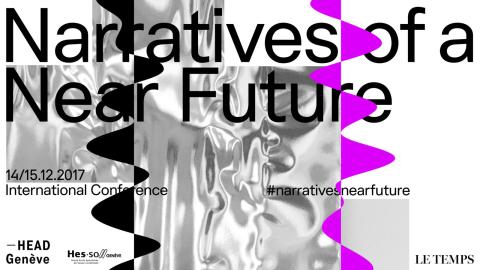
Jean-Pierre Greff – Foreword
Jean-Pierre Greff, the HEAD – Geneva’s director, returns to the founding of the school’s interdisciplinary project, and of the AC/DC (contemporary art/contemporary design) symposium, a cornerstone event for the school in 2007. Ten years later, Greff considers Narratives of a near future a way to propel the project towards new horizons of thought, though we are plunged into a systemic crisis that blockades the future. -
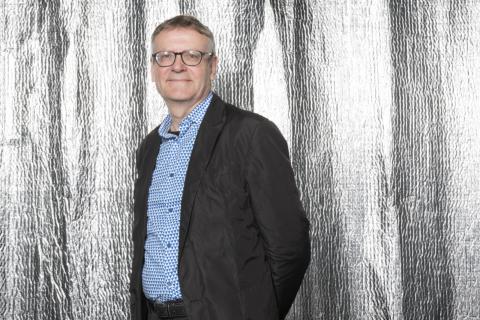
Mark Wigley
The architect and design theorist Mark Wigley has engaged in a re-evaluation of the notion of design, so as to uncover some of the features that led mankind to design its own extinction.
-
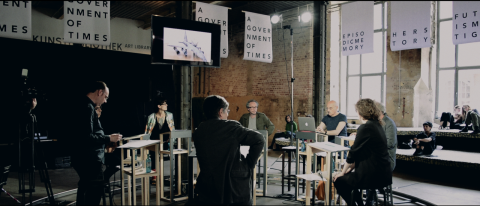
A people is missing – Extension du régime potentiel
Our age has been described as the age of winter – an ice age for possibilities. Faced with this ‘crisis of the future’ that the early 21st century is undergoing, Les Impatients – a series of works created by A people is missing – are those who work towards reconstructing the future (or futures). They are the same people who feel a sense of impatience towards a seemingly stagnant and immobile History. Based on this crisis, this series arises from the urgency to rediscover possibilities for the future. A people is missing collects and gathers together traces and hints of possible futures. They then seek to sew together these ‘bursts’ of possible futures, which many modern artists and thinkers express. They address this investigation like rhapsodes – the rhapsode who goes from town to town reciting poems written by others, the seeker, the liaison agent who, in the primary sense of the term, aims to sew and link together different spaces, continuously, as far as the limits of the inhabited world. -
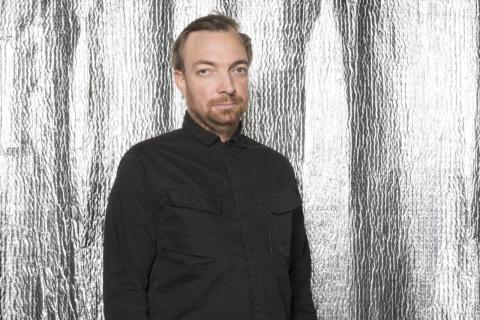
Liam Young – Hello city!
Digital technologies are radically reshaping our perception and occupation of cities. Join speculative architect Liam Young and an all-seeing smart city operating system as they take a tour in a driverless taxi through a network of software systems, autonomous infrastructures, ghost architectures, anomalies, glitches, and sprites, searching for the wilds beyond the machine. The talk is an audio-visual expedition to a city found somewhere between the present and the predicted, the real and the imagined, stitched together from fragments of real landscapes and designed urban fictions. -

Mathieu Triclot – Has the cyber-world become a reality?
Cybernetics has addressed all these issues, which have made a major comeback in the public discourse about technology, while also constructing a framework (in particular around Norbert Wiener’s public commitments) for political criticism of technology which it is interesting to revisit at this time. A cyber-policy involves several axioms which Wiener might spell out as follows: the mode of production of knowledge must be taken into account; information is not immaterial; information is not intended to be traded; governing machines are an illusion; “thinking gadgets” should be rejected and the myth of robots replacing humans, dispelled. -
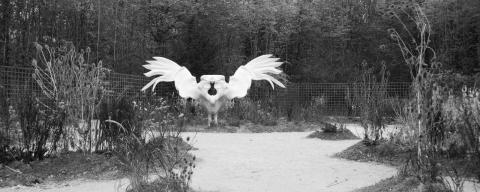
Marguerite Humeau – Riddles
The complex of works RIDDLES consists in five projects and exhibitions that took place in 2017 on the High Line in New York, at C L E A R I N G New York/Brussels, at the Schinkel Pavillon in Berlin, in the Bosquet de l’Arc de Triomphe in the Château de Versailles gardens and at Haus Konstruktiv in Zürich. The figure at the center of all RIDDLES exhibitions is that of the sphinx, a human-animal composite being present in all civilisations around the world, the beginnings of which date all the way back to the early history of humanity. In both Egyptian and Greek mythology, a protective function is attributed to the sphinx: the ability to guard humanity against potential enemies. In ancient Greece, it would also decide on life or death according to whether a riddle was answered correctly or incorrectly. Marguerite Humeau bridges the gap between past and present, hypothesizing that today’s surveillance systems, drones for instance, are directly descended from the ancient figure of the sphinx. While researching the origins of the sphinx, the artist came across the Lion Man, a figurine 35’000 to 41’000 years old, found in 1939 in the Hohlenstein-Stadel cave in the valley Lonetal. This shows that sphinx-like figures were already being made in the Upper Paleolithic Age, a time when humans were exposed to wild animals and had not yet become the dominant species on Earth. Another observation support this theory: vultures and lions, that together compose the figure of the sphinx, and that are often represented in early representations of conflicts, are two of the rare species to be eating human flesh. This led the artist to assume that early humans invented the figure of the sphinx as a protective deity to guard against enemy attacks. Humeau sees the sphinx as a hybrid of all menacing attackers, which it protects and also threatens. -

Mathieu Lehanneur
Mathieu Lehanneur draws his audience into a travelogue about his projects and the wishes of his sponsors, from a priest to a champagne brand. It appears that, beyond a considerable use of cutting-edge technology, Lehanneur’s work runs through the understanding of essential human needs and drives: the headiness of speed, circadian rhythms and protective maternal concern. -
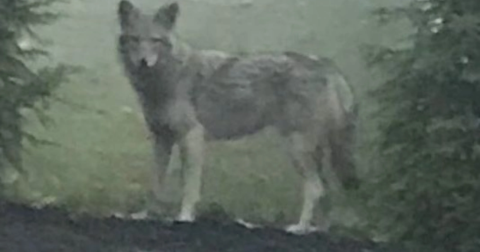
Baptiste Morizot and Nastassja Martin – Retour du temps du mythe
Can we conceive any other relationship with the living than the one the Western world has inherited? Our relationships, between exploitation and protection, are based on a fundamental asymmetry between us and them. Could we conceive and implement relationships that would recognise our uniqueness as human animals without creating a split that would condemn us to “natural” relationships with nature’s creatures?
-
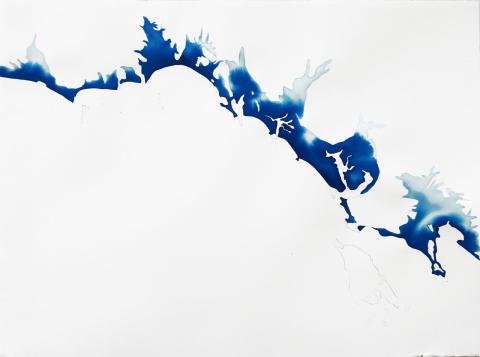
Marie Velardi
Terre-Mer (“Land-Sea”) is an ongoing project that focuses on both past and future shifting coastlines, and on the relationship between land and sea. It follows field experiments carried out by Marie Velardi in France, Scotland, India, Thailand, Italy and the Netherlands. Based on encounters and conversations with coastal residents, questioning living conditions with the sea and how human beings live with uncertainty and hazards, Marie wrote a Letter from Land-Sea. The project has also led to other productions, including watercolour cartographic paintings representing coastal areas: where the sea once was and where it could come back to, linking memories of land through old historical maps with simulations of rising seas in the future. This method of representing the land does not correspond to the usual distinction between land and sea with a coastline. In her paintings, the coastline is thicker, representing an in-between area, where the land and the sea interact and connect, where the past could meet with possible futures. -
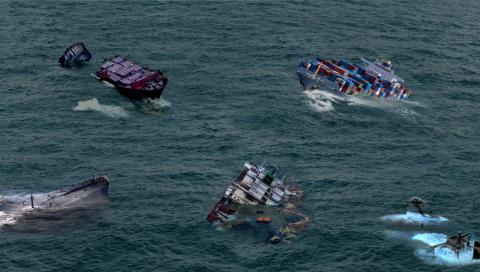
Oliver Ressler – Gathering around the Wreckage
Not too long ago, global warming was science fiction. Now it has become hard science, and a reality we already live in. According to the Copernicus Climate Change Service, average global temperature in 2016 was close to 1.5 °C above pre-industrial levels. Many scientists see this as the “red line” beyond which global warming will be unstoppable and uncontrollable. In his presentation, Oliver Ressler will talk about a new cycle of films that may turn out to be a story of the beginning of the climate revolution, the moment when popular resistance began to reconfigure the world. The project follows the climate movement in its struggles to dismantle an economic system heavily dependent on fossil fuels. It records key events for the climate movement, bringing together many situations, contexts, voices and experiences. The first two events – there is one film for each – are the action during the COP21 summit in Paris in December 2015 and a blockade of a fossil fuel extraction site in Germany in May 2016. -
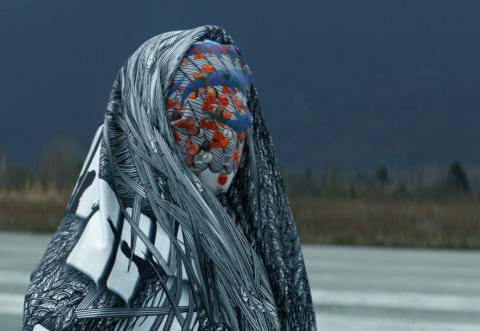
Metahaven – Complex belonging
Complex belonging question: how about "the transformation profonde de la condition humaine"? The stories of the postanthropocene are (of course always) studies of new inequalities, of holographic pop singers, faceless factory workers. From pamperer vs. pampered to renderer vs. rendered. The rendered are 21 years old. "The future is a stranger." (Yes.) Complex belonging is a question of longevity of living relationships and livelihoods. How does the child explain it to you? Where does everyone go? What if you are stripped of our usual language? Task. Try to build sentences about this world without using the words smartphone, internet, server park, infrastructure, AI, drone, etc. That's hard but it is necessary to bring out new and better words for our life with contradictions, objects and others. Tell stories. Everyday science fiction. Digital monasticism. Let's do it. -
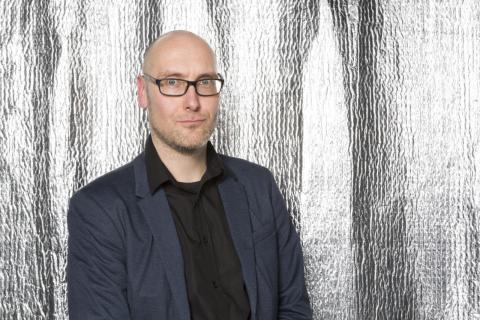
Jussi Parikka – Some people say not to worry about the air
This presentation speaks about air and the lack of air. The air is full of nitrogen, oxygen, light, clouds, wind, pollution, radio, airplanes, satellites, signals, dust, birds and more.
-
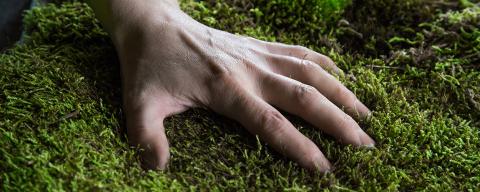
Vanessa Lorenzo Toquero – Inhabiting the Toxic Jungle
Most interactions between humans and the Earth are mediated through technological objects, often influenced by a dualism that separates nature from culture; they filter out a wide range of data streamed from events that cut across spheres (biosphere, lithosphere, ionosphere, semiosphere, techno-sphere, etc...). This partial approach to our environment haunts our perception and requires new modes of abstraction to decipher the secrets of a global shift. By exploring the potential contribution of living beings to media systems, we build a common ground that enables equity by considering the other inhabitants at the same level to tell stories about our planet: citizens with memory, sensing capabilities and political weight that could influence policy making and help us create forms of collaboration. What would be the dialogue between a GMO with sensing capabilities and a toxic artifact? Could fungi and bacteria stream out data to map techno-geographies of our damaged locations? Could moss sound out the Anthropocene? By appropriating technologies and scientific protocols, we could give rise to new ecologies that would lead us to alternative futures.
-

Kodwo Eshun – The Science Fiction of Kojo Bernard Laing from the Year 2020
Major Gentl and the Achimota Wars, the third novel written by the Ghanaian novelist and poet Kojo Bernard Laing in 1992, is the most sustained science fiction yet written in which the futurity of the African continent constitutes the ground and the stake of warring forces. Set in the year 2020, Major Gentl and the Achimota Wars narrates the right to invent futurity as a War for and over the future existence of the continent. Laing’s conflictual vision of the year 2020 poses problems and possibilities for the future thought of science fiction’s futurities. In what ways does Laing’s science fiction from the year 2020 pressurise the predicates that support the futures narrated by science’s fictions? -
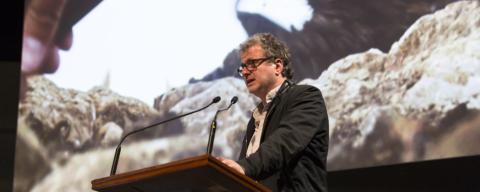
Khalil Joreige – Unconformities
Khalil Joreige presents his most recent collaborative project with Joana Hadjithomas, Unconformities, which works on temporalities and confronts the idea of the city in relation to its complex histories of inhabitation. The pair creates artworks derived from drilling cores, which reveal and fix the subterranean worlds of Paris, Athens and Beirut: three cities omnipresent in their personal imaginary. Recovered from the construction sites that discard them after use, these core samples bare their "unconformities" – temporal ruptures, natural disasters, geological movements – in full view, revealing construction as a cyclical process; the defining feature of civilizations past and present. History appears not as layers but as actions, a kind of palimpsest mixing epochs and civilizations. These poetic recompositions question the dominant forms of narrating and representing history, but also address debates around the Anthropocene. Hadjithomas and Joreige presented Unconformities at the Centre Pompidou in Paris after their nomination for the Marcel Duchamp Prize, which they won. -
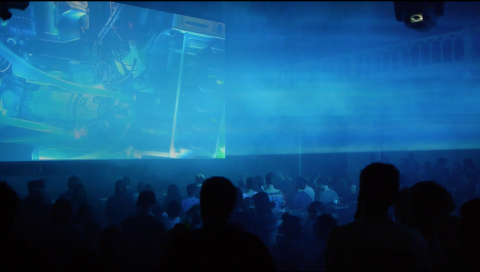
J. G. Biberkopf – Mechanics of Overflow
J. G. Biberkopf (Gediminas Žygus) works within the paradoxical relationship between club music and art music. Assembling a collage spanning a vast range of influences from dark ecology, sound studies, architecture, media theory, existentialist movements, post-dramatic theatre to grime and musique concrete. His live performance reflects the urge to make music sound as a “self-sufficient” ecology that cannot be traced back to him as a creator, but that rather seems to originate from an actual landscape. In this vein, he works intensively with aural signifiers, taking sounds that are eminent in public sphere, and noises that work as signs or memes, to explore the semiotics of sound.
-
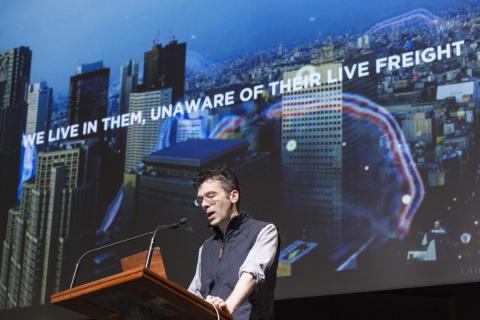
Kevin Slavin
Kevin Slavin works at the crossing of biology and art. Here, Slavin introduces us to the emerging investigative field of “urban metagenomics.” The reduction in costs of DNA sequencing has opened up new possibilities for the mapping of non-human microbiotes which compose and hybridise our bodies and environments. Slavin underlines the poetry in this unsuspected bacterial landscape. -
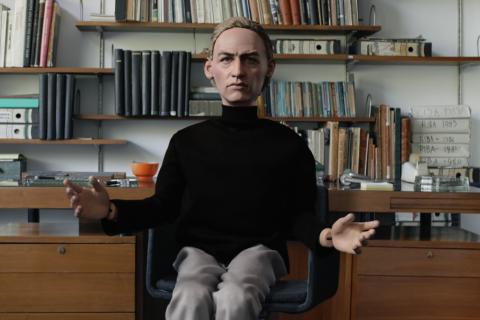
Cécile B. Evans – Feeling For You
Feeling For You is an ongoing, frequently updated performative lecture that reverse engineers the artist's practice through a series of personal anecdotes, google searches, images, audience reactions, and video clips. Meandering through the last few years of Evans' work, the talk follows the same 'hyperlinked' logic used in recent projects like Hyperlinks or It Didn't Happen or AGNES. Touching on the impacting rise of digital technology and the disorienting feedback loops it creates within society, Evans takes the opportunity to question the last few years of her own work, including projects such as Sprung A Leak, What the Heart Wants, and Amos' World. -

Michael Hansmeyer
Using examples of “caves” he created, including some for an exhibition at the Centre Pompidou, the architect Michael Hansmeyer explains how algorithmic programming allows for unrivalled complexity in architecture. The division of simple geometric forms into always-smaller units generates baroque structures that are produced by means of 3D printing. The delegation from drawing to the computer raises the question of authorship for such structures whose level of detail challenges human imagination. -
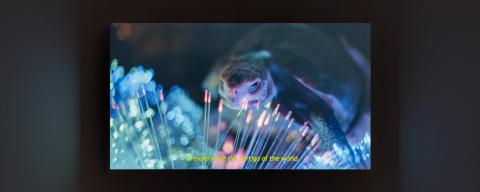
Korakrit Arunanondchai
‘Will you find beauty in this sea of data?’ A question posed by the artist, encapsulating the intense reality of the present, while Arunanondchai introduces us to his grandmother who is descending into dementia: ‘In this body the data is alive but it is stuck in a loop, the present stopped existing for me’. Korakrit Arunanondchai’s Painting with history in a room filled with people with funny names 4 explores universal themes such as — the past and the present, the future and the past, the human and the animal, memory and technology, life and death.
Annie Godfrey-Larmon
-
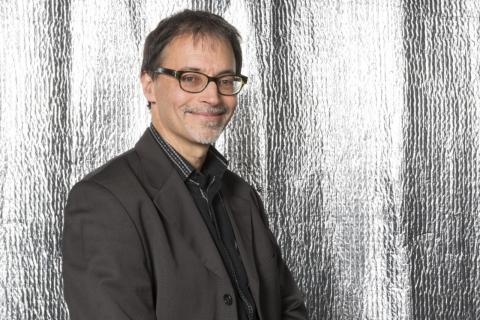
Yves Citton – Carbon Liberation Front vs. Carbon Copy Conspiracy
We often say that we live in a world of “data” (given), often forgetting that this is in fact “capta” (taken). The joint role of artists and scientists now could well be to over-take the way in which programmes deal with the capture and management of the data which prevalent economic paradigms feed on. What type of over-takings do contemporary artistic approaches give us the model of? What political value can we draw from it? This intervention will require the clever mind of Vilém Flusser to define the issues of what is at play between human gestures and the programmed devices that now make up our working and living environment. The aim will not be to advocate a de-programming retreat, away from the pernicious and totalitarian grip of programming, or to settle for re-programming (a little better) the algorithms of ubiquitous computation. Rather, the aim seems to consist in over-taking what takes us, without necessarily claiming to avoid it, but with the hope of diverting the path of the ineluctable data companies that plot our daily lives and our futures. -
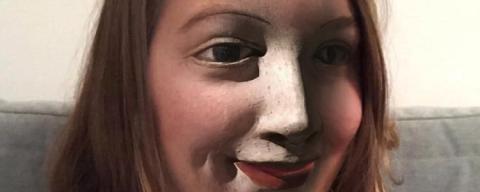
Lauren Huret – Les âmes suspendues
Entirely shot with a smartphone and a facial recognition application, the video is composed of a collection of attempts to replace identity and unexpected trade between faces and objects. In search of spectral appearances in various contexts, the application seeks to recognise the features of a woman on everything that resembles her and superimposes her own drawn, empty, disturbing masks. The video results are kind of hallucinatory "algorithmic pareidolies". -

Dan Hill
Uber (the taxi service) has made car traffic skyrocket in cities, extracting profits and resources from exploited territories and accumulating those profits in the Silicon Valley. This example is testament to the hazards of technology in cities where technology is the prerogative of big corporations. Self-driving vehicles are likely to bring about even more brutal disruptions. The designer and urban-planner Dan Hill pleads for a re-appropriation of technology through modest, adjustable, small-scale, and cooperative-inspired planning forms. -

Aimée Mullins
Aimée Mullins is an Olympian, ground-breaking model, beacon for design/tech and an actor. Born without fibulae, she was amputated below the knee at the age of one and learned to walk on prosthetics. She was one of three students chosen for full academic scholarship from the Department of Defense and at 17 became the youngest person to hold a top-secret clearance at the Pentagon. While at Georgetown she became the first female amputee to compete in the National Collegiate Athletic Association (NCAA) and was instrumental in the design of, and the first person to compete in, carbon fiber prostheses modeled after a cheetah, now the international standard for amputee runners. She set world records in the 100m, 200m, and long jump. Mullins made her catwalk debut for Alexander McQueen, becoming a muse for him and artists like Matthew Barney. As an actress, she currently appears in the award-winning Netflix series Stranger Things. She's in conversation with Jill Gasparina. -
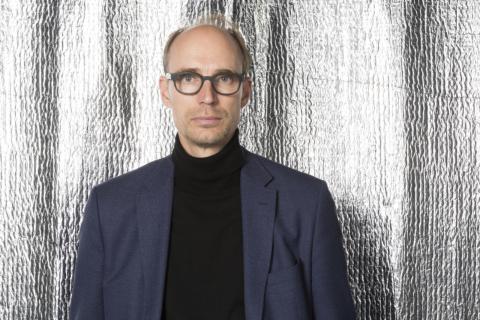
Olaf Blanke
Modern robotic and haptic technology in the form of surgical robotics, prosthetics and rehabilitation robotics has been widely applied for the improvement of surgical procedures, the training of new abilities, and the restoration of lost sensorimotor functions. Unprecedented advances have also been made in neuroscience and especially our understanding of the human brain. This work discovered the dedicated structure and functions of the human brain, including the neural processes and networks that encode how our brain represents our body and how these brain mechanisms enable human consciousness and the self. I will first present our recent work in psychology, neuroscience, and digital technologies (virtual reality) that has linked consciousness and the self to the processing of bodily signals by specific neural processes. Next, I will show how these scientific insights, if linked with engineering expertise in robotics and virtual reality can be applied to the design of powerful bionic limbs, aviation robotics and medicine. I will conclude by sketching the future of the full integration of digital technologies with neuroscience and robotics in order to develop what I propose to call experience engineering of body and self. -
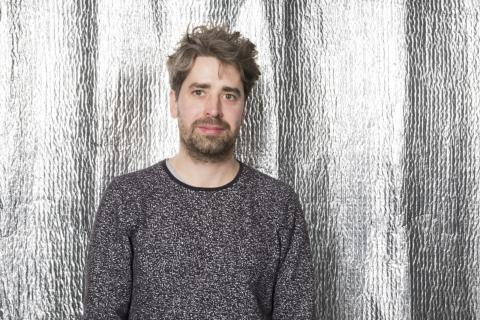
Thomas Thwaites – A holiday from being human (GoatMan)
Wouldn’t it be nice to take a holiday from being a human? A holiday from the existential angst, worry and stress of life as a self-aware mortal being. Wouldn’t it be nice to be able to enjoy fresh green grass, to gallop across the landscape, to be free from time? Yes. So I tried to become a goat to escape the angst inherent in being a human. The project became an exploration of how close modern technology can take us to fulfilling an ancient human dream: to take on characteristics from other animals. But instead of the ferocity of a bear, or the perspective of a bird, the characteristic most useful in modern life is something else; being present in the moment perhaps. With this work I wanted to present an alternative aesthetic for the vision of the post-human; a little twee, a little homely, a reminder that there are many viewpoints, many perspectives, and many futures. Anyway I ended up in the Alps, on four legs, at a goat farm, with a prosthetic rumen strapped to my chest, eating grass, attempting to become a goat. -

Ying Gao
Two dresses, named “Can’t” and “Won’t”, displaying an aesthetic and motion reminiscent of microbial life, which react according to a facial expression recognition system and stop moving as soon as the on-looker begins to emote. Paradoxes. The “Can’t” and “Won’t” dresses push the notion of a false neutrality a bit further by asking the on-looker, who is usually highly solicited, reactive and emotional, to maintain a stoic attitude and posture. It is only on this condition that the garment’s “life” is prolonged, having already been set in motion by the visitor’s presence; it demands a level of humility clearly out of synch with today’s over-the-top expressiveness. Being asked to take an active part in a “living” system, the spectator therefore becomes a component of a self-generated ecosystem, as French philosopher Edgar Morin suggests in La Méthode, La Vie de la vie (The Method, The Life of Life): “Auto-eco-organisation signifies the plurality of possible relations within a living organism, which is simultaneously closed on itself, and infinitely open to the environment and its diversity.” This balletic back and forth is entertained by a means of trompe l’oeil, where robotised movements and shadow plays create a nuanced and delicate breathing effect. -
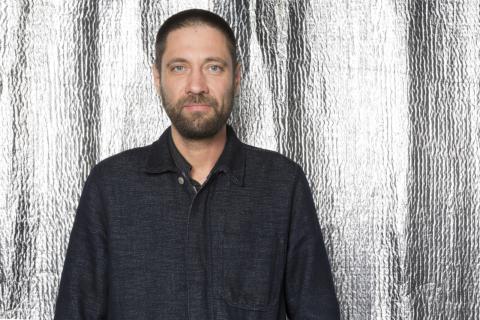
Arne Hendriks – The Incredible Shrinking Man
Over the past 8 years Arne Hendriks has investigated if and how the human species can become smaller. "The Incredible Shrinking Man" investigates the possibility of a smaller human species. Small people need less and have more. At present Homo sapiens is growing towards scarcity where we should be shrinking towards a situation of abundance. The human species is one of the most hypervariable species on Earth. The smallest person known to human history was Chandra Bahadur Dangi from Nepal, who measured 54.6cm. American Robert Wadlow was the tallest person in recorded history with a height of 272cm. "The Incredible Shrinking Man" suggests to shrink to 50cm. At this height we need less then 25% of the resources we need today. The challenge is not so much how to become smaller, this is a matter of genes and food, but how to desire to become small. People have an irrational love for tallness, growth, more. We don’t want to become smaller. Yet we must. Arne Hendriks will share his ideas on how to overcome the seemingly impossible and take the first few small steps towards a smaller human species. Rule one: Suspend disbelief. -
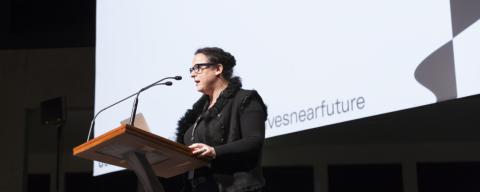
Alexandra Midal – Conclusion
As soon as the colloquium is over, Alexandra Midal undertakes the flashback exercise. Her synthetic and personal re-reading unravels the spool of time and narratives, proceeding in between myth, animism and apocalypse but also speculation, eroticism and hope as resistance. So many arguments contradict Rem Koolhaas’ assertion that "capitalism is our only horizon."